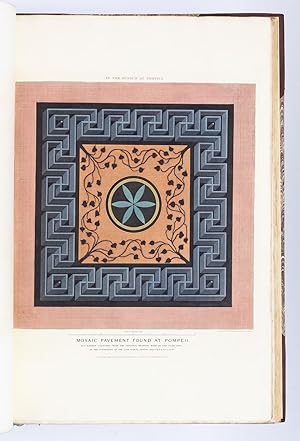world architecture (17 Ergebnisse)
Produktart
- Alle Produktarten
- Bücher (17)
- Magazine & Zeitschriften
- Comics
- Noten
- Kunst, Grafik & Poster
- Fotografien
- Karten
-
Manuskripte &
Papierantiquitäten
Zustand
- Alle
- Neu
- Antiquarisch/Gebraucht
Einband
Weitere Eigenschaften
Land des Verkäufers
Verkäuferbewertung
-
The international academy od architecture.
Verlag: Ldn World Architecture oJ
Anbieter: Ottmar Müller, Offenburg, Deutschland
Erstausgabe
weicher Einband. Opb. 4°. 131 S. Zahlr. Abb. Nummer 37. 608 gr.
-
Paperback / Softcover. 31 x 23 cm. Richly illustrated in color and b/w. 238 pages. Very good/near fine copy [ Architecture / international ].
-
Paperback / Softcover. 31 x 23 cm. Richly illustrated in color and b/w. 152 pages. Very good/near fine copy [ Architecture / international ].
-
The International Academy of Architecture. Nummer 35
Anbieter: Celler Versandantiquariat, Eicklingen, Deutschland
Verbandsmitglied: GIAQ
Buch
Cheerman Ltd., 1995. 140 S. mit zahlr. Abbildungen., kartoniert., quart.---- Gutes Exemplar - 640 Gramm.
-
An illustrated History
Verlag: Hamlyn, 1966
ISBN 10: 0600039544ISBN 13: 9780600039549
Anbieter: Celler Versandantiquariat, Eicklingen, Deutschland
Verbandsmitglied: GIAQ
Buch
9. Aufl. Hamlyn, London, 1976. 348 S. mit 1026 Textabb. u. LVI Tafelabb., Pbd.U., quart.--- 2330 Gramm.
-
World Architecture and Interiors. Architecture et Interieurs du Monde. Mondiale Architectuur & Interieurs.
Verlag: Beta-Plus, 2005
ISBN 10: 9077213317ISBN 13: 9789077213315
Anbieter: Antiquariat Herold, Berlin, Deutschland
Buch
fester Einband. . Leinen, OU., 228 Seiten, 4°. * Sprache: English, French, Dutch, kleine Spur am Rücken, ansonsten sehr guter Zustand (K93). 2200 gr.
-
Walter Gropius by James Marston Fitch
Verlag: New York, 1960
Anbieter: Untje.com, Roeselare, Belgien
Paperback. Zustand: Good. pp. 128 / illustrated English.
-
VUES DES PLUS BEAUX RESTES DES ANTIQUITÉS ROMAINES
Verlag: Bouchard et Gravier, Rome, 1787
Anbieter: Phillip J. Pirages Rare Books (ABAA), McMinnville, OR, USA
525 x 375 mm. (20 3/4 x 14 3/4"). Near contemporary half calf over marbled boards, smooth spine divided by gilt rules into panels with blind-stamped centerpiece, red morocco label, hinges reinforced with buckram, marbled endpapers and edges. Engraved vignette on title page and 99 COPPER-ENGRAVINGS ON 60 PLATES. A 1911 letter from the editor of "Hobbies" magazine in response to a previous owner's questions about the contents of this volume laid in at front. The plate numbered 92 with an 18th century cemetery scene pasted to the verso; rear flyleaf with two engravings pasted on. Cicognara 3595; Brunet I, 646. â Spine label partly missing, front joint cracked from tail edge to midpoint, head and tail of spine chipped, boards a bit chafed and with a drizzle of white paint to front cover, but the binding still solid. Occasional mild marginal foxing or finger smudges, but an excellent copy internally, fresh and clean throughout, and with pleasing impressions of engravings. Not an external beauty (as is often the case with architectural tomes), but quite attractive inside. This is a collection of beautifully engraved plates drawn from the work of a painter and engraver who made engravings for Piranesi's 1748 "Varie vedute di Roma antica e moderna," and collaborated with him on the majestic "Le antichità Romane" (1756). Inspired by his work with the master, Barbault drew and engraved his own series of Roman views, issued in "Les plus beau monumens de Rome ancienne" (1761) and "Recueil de divers monumens anciens" (1770). The plates in the present volume are drawn from those works. Barbault's picturesque scenes are characterized by a sense of romantic decay: in some, the landscape is open and generally free from human intrusion, the once-grand ruins rising proudly from the encroaching vegetation. One has the sense of being among the first to stumble across these hidden wonders. In others, the artist juxtaposes temple remains with the shed of a contemporary farmer, a humbling contrast between past grandeur and present poverty. Jean Barbault (1718-62) had studied painting in Paris with John Restout II before receiving a scholarship from the Académie des Beaux-Arts for travel to Rome in 1721. Once there, he stayed, building a career as engraver and establishing himself with Piranesi and his circle.
-
LES EDIFICES ANTIQUES DE ROME
Verlag: Jean Baptiste Coignard, Paris, 1682
Anbieter: Phillip J. Pirages Rare Books (ABAA), McMinnville, OR, USA
Erstausgabe
FIRST EDITION. 443 x 290 mm. (17 3/8 x 11 1/2"). 6 p.l., 323, [1] pp. Attractive modern calf-backed marbled boards with single decorative blind rule, raised bands, one compartment with red morocco label lettered in gilt, others with a diamond-shaped foliate tool in gilt. With engraved title, headpieces and initials for dedication and text, and 137 ARCHITECTURAL PLATES (included in pagination) after drawings by Desgodets. A Large Paper Copy. Engraved title with ink stamp of G. Wills Esqr; two leaves with marginal notes in a contemporary hand. Fowler 102; Millard, French 62; Brunet II, 625. See also: W. Hermann, "Antoine Desgodets and the Académie Royale d'Architecture" in "The Art Bulletin" Vol. 40, No. 1 (Mar., 1958), pp. 23-53. â Just a hint of browning right at top edge of leaves, final four leaves (including plates) with a half dozen small rust-colored droplets (from wax?), but easily A FINE COPY, the binding unworn, text and plates with only the most trivial imperfections, and the margins very, very wide. With meticulously executed plates by some of the most talented engravers of the day, this groundbreaking work stirred controversy by advocating the importance of scientific accuracy and direct observation in the study of architecture and by pointing out inconsistencies in the writings of some of the most distinguished ancient and modern architectural authorities. The work was the result of great physical determination, an unprecedented example of insistence on accuracy, and a notable case of architectural iconoclasm. Antoine Babuty Desgodets (or Desgodetz, 1653-1728), was just 20 years old when he was sent to Rome with the task of measuring and sketching out ancient buildings on behalf of the Académie Royale d'Architecture. He stayed in Rome for 16 months, and as Hermann relates, "It is almost inconceivable that within this comparatively short time one man was able to survey thoroughly the great variety of monuments, the more astonishing if one learns that he selected for publication drawings of only about half the number of buildings he had actually measured. . . . He measured the buildings just as they stood without any attempt at restoration, incorporating as many details as possible, the whole undertaking being carried out with a degree of thoroughness and accuracy never before known." Desgodets returned to Paris in 1677 and published the present work with the assistance of Jean-Baptiste Colbert, founder of the Académie Royale d'Architecture, who, as Millard tells us, "had Desgodets' drawings engraved by the king's engravers at His Majesty's expense." Our author ruffled many feathers: he had the temerity to note "discrepancies in Vitruvius' text and listed errors made by modern authorities (such as Serlio, Palladio, Antonio Lobacco, and Fréart de Chambray) in establishing measurements for the same buildings he described. Desgodets then allowed the evidence of the ancient monuments, observed with scientific accuracy and recorded to the fraction of an inch, to take priority over the written architectural documents on which the Academy had based its principles." The 137 plates detail 25 antique buildings in and around Rome, and are breathtaking for both their devotion to accuracy and the skill of the engravers. In Fowler's words, "The plates, many of them masterpieces of architectural drawing and engraving, were engraved from the drawings of Desgodets by De Chastillon, S. Le Clerc, J. and P. Le Pautre, N. Guerard and others. This work gives the first really accurate representation of ancient Roman architecture and is the beginning of that long series of measured drawings which are one of the great traditions of French architecture. It is remarkable that the drawings for this work were made when the author was about twenty-two and the book was published before he was thirty." Because of its importance, the book appears at auction with some frequency, but copies in agreeable condition are hard to come by.
-
RUINS OF THE PALACE OF THE EMPEROR DIOCLETIAN AT SPALATRO IN DALMATIA
Verlag: Printed for the Author, London, 1764
Anbieter: Phillip J. Pirages Rare Books (ABAA), McMinnville, OR, USA
Erstausgabe
FIRST EDITION. 520 x 365 mm. (20 3/4 x 14 1/4"). iv, [8] (subscribers list), 33 pp. Attractive modern light green half morocco, gilt, by J. F. Newman of Dublin (his ticket on front pastedown), raised bands, spine panels with central patera ornament, two darker green morocco labels, reinforced hinges, edges untrimmed. WITH 61 SPLENDID ENGRAVINGS (14 plans and elevations, 47 views) ON 54 PLATES (eight double-page, six folding) by Bartolozzi and others. Front flyleaf with ink signature of Francis D. Bedford dated October 1886. Cicognara 3567; Fowler 2. â Spine sunned to a light olive shade, one corner bumped, one plate with a little browning along the fold, occasional mild marginal foxing or trivial smudges, but A FINE COPY--fresh, bright, and clean internally, with deep impressions of the type, rich impressions of the plates, and generous margins, in a binding with few signs of wear. This is an extremely appealing copy of one of the great architectural books of the 18th century, described by Cicognara as a "magnificent and grandiose work." Scottish architect Robert Adam (1728-92) was a product of the Scottish Enlightenment, and moved in intellectual circles that included historian William Robertson (who wrote the introduction here), David Hume, and Adam Smith. His interest in architectural drawing was stimulated by books in his father's extensive library, which DNB tells us contained "a working collection of illustrated architectural books in English, French, and Italian, and a series of manuals on architectural draughtsmanship." This curiosity developed into a passion during his 1755-57 tour of Italy, which "was in every way a period of intense professional training during which the skills learned in Scotland were tested and given an international gloss by the Roman circle in which he now moved." (DNB) At the center of this circle was French architect, antiquarian, and artist Charles-Louis Clérisseau (1721-1820), the leading authority on Roman antiquities and architecture, who introduced Adams to, among others, the great Piranesi. With Clérisseau as guide and tutor, he explored and sketched various sites before arriving at the un-surveyed fortress palace built by the former emperor Diocletian at Spalatro (the modern-day Croatian city of Split). Adam undertook a survey of the building and drew the architectural plans and elevations for this work, while Clérisseau sketched views of the ruins. Adam planned this book as a way of promoting his career as an architect, and worked with Clérisseau to have engravings made for it. According to Thom, "while the traditional plans, elevations and sections--what Robert Adam called the 'Geometricals'--were generally supplied by English engravers like Rooker, Patton and Walker, the all-important picturesque views and perspectives, which Adam thought were essential to convey the emotional impact of the remains of Diocletian's Palace, were engraved in Italy, mostly by Bartolozzi, Paolo Santini, and Zucchi." Adams also wrote the architectural commentary. The publication was a success, praised by the "Critical Review" in October 1864 as possessing "a taste and execution that has never been equalled in [England]." As DNB observes, "during these two Roman years Adam succeeded in transforming himself from a provincial and rather green Scottish architect into a cosmopolitan figure, ready indeed to put into effect 'the Antique, the Noble & Stupendous.'" Now based in London, he embarked on a distinguished career, specializing in country houses and townhomes that reflected the deep influence classical architecture and his Italian sojourn had on his work. Our copy was once owned by another artist, Francis Donkin Bedford (1864-1954), who exhibited landscapes at the Royal Academy and illustrated books during the Golden Age of children's book illustration in the late 19th and early 20th century.
-
LES RUINES DE PAESTUM, OU DE POSIDONIE, DANS LA GRANDE GRECE
Verlag: Chez l'auteur, London, 1768
Anbieter: Phillip J. Pirages Rare Books (ABAA), McMinnville, OR, USA
Erstausgabe
First Edition in French. 590 x 380 mm. (23 1/4 x 15"). 52, [2] pp. Modern brown quarter morocco over green linen boards, brown morocco label with gilt lettering on smooth spine, edges untrimmed. WITH 25 FULL-PAGE ENGRAVED PLATES OF GRECIAN RUINS, and seven smaller engraved plates in text (including one on dedication page). A Large Paper Copy. Fowler, p. 157; Millard, British 41; Blackmer 1065; Brunet III, 1329. â Head of spine partly torn (but with no loss), contents with not infrequent light marginal soiling (though plates uniformly clean), other minor imperfections, but an excellent copy with greatly generous margins, with deep impressions of the type, and with strong impressions of the plates. This work is the first significant account of the ancient city of Paestum, being, in the words of Blackmer, "larger and much more complete than any of the previous publications." Located in the Tyrrhenian Sea off the coast of southern Italy, Paestum (or Poseidonia in Greek) was founded by Greek colonists in the sixth century B.C. and still contains beautifully preserved ruins from that period, including temples, an amphitheater, and painted tombs. Abandoned in the Medieval period, Paestum wasn't rediscovered by the West until the 18th century, with the first modern publication of the site not appearing until 1764, when a suite of plans by G. P. M. Dumont appeared (with no text), based on the observations of Jacques-Germain Soufflot. As Millard indicates, the genesis of the present publication has an extremely complex history (we do not even know with certainty who wrote the text), but we do know that engraver Thomas Major (1729-99), whom DNB calls "the first great English landscape engraver," was responsible for preparing the plates. Because he had no first-hand knowledge of the site, Major relied on images by other artists, including Antonio Joli, Gaetano Magri, Robert Mylne, and Jacques-Germain Soufflot. The text was first published in English, and then in French the same year. According to Fowler, "this work . . . was an important eighteenth-century pioneer contribution to the knowledge of Greek architecture in England"; and Millard tells us that "the book was surprisingly well received by reviewers" in both England and France, remaining "the standard reference to Paestum until 'Les Ruines de Paestum ou Posidonia' by C.-M. Delagardette was issued in 1798.".
-
ROMANAE MAGNITUDINIS MONUMENTA
Verlag: Domenico De Rossi, Rome, 1699
Anbieter: Phillip J. Pirages Rare Books (ABAA), McMinnville, OR, USA
277 x 387 mm. (10 7/8 x 15 1/4"). 138 engraved leaves. Modern dark brown calf over light brown paper boards, vellum corners, raised bands, spine panels with blind-stamped floral ornament and gilt titling. With engraved title and 137 INTRIGUING PLATES engraved by Pietro Santi Bartoli and Domenico De Rossi, including maps, topographical views, and imaginative depictions of ancient Roman temples, villas, theater, and other monuments, all with engraved explanatory text beneath the image. Cicognara 3857; Brunet IV, 1405. â Leaves washed and lightly pressed, but an extremely fine copy, the leaves quite bright, the engravings very rich, and the binding unworn. This is an excellent copy of a work that is unusual because it illustrates not just the great monuments of ancient Rome (Colosseum, Pantheon, etc.), but also architectural settings and details relating to the allegorical and mythological, along with imagined visions of the military and civic greatness of the ancient city. The plates here are adaptations by the printer and Pietro Santi Bartoli of images from Giacomo Lauri's 1637 work, "Antiqua urbis splendor," (along with the addition of 17 new engravings done by Santi Bartoli). According to "Dizionario Biografico degli Italiani," Santi Bartoli (1635-1700) studied under the great Nicolas Poussin, then devoted his art to the "theme of the 'magnificence of Rome' and dissect[ed] it with a tenacity and constancy that last[ed] a lifetime." Domenico de' Rossi (1659-1730) joined the printing workshop of his adopted father Giovanni Giacomo de' Rossi in 1679, and took over the business on Giovanni's death in 1691.
-
THE TOPOGRAPHY OF TROY, AND ITS VICINITY
Verlag: Printed by C. Whittingham for T. N. Longman and O. Rees, London, 1804
Anbieter: Phillip J. Pirages Rare Books (ABAA), McMinnville, OR, USA
440 x 275 mm. (17 3/8 x 10 7/8"). 2 p.l., 124 pp. Contemporary calf, covers framed by blind cresting palmette roll and gilt rules, gilt palmette cornerpieces, neatly rebacked to style, raised bands, spine panels decorated with blind rolls, gilt titling, new endpapers, marbled edges. HAND COLORED THROUGHOUT, INCLUDING 12 AQUATINT VIGNETTE HEADPIECES (one of these uncolored) AND 43 ILLUSTRATIONS ON 28 PLATES (14 of these etchings, 29 aquatints, three folding) PLUS TWO ENGRAVED MAPS. Abbey Travel 399; Blackmer 660. â Leather worn away at corners, long, thin scratch on back cover, short tear to head of one plate (touching only frame and sky), three quires and one map a little foxed, occasional light offsetting to text leaves adjacent to plates, but still quite an excellent copy--the binding solid and not unattractive, and clean and fresh internally, WITH BRIGHT, PLEASING PLATES. This impressive debut work by classical archaeologist William Gell has long been considered the most beautiful book on Troy. It elicited praise from no less a philhellene than Lord Byron, who Abbey notes included this couplet in "English Bards and Scotch Reviewers": "Of Dardan tours let dilettanti tell / I leave topography to classic Gell." Soon after receiving his B.A. in 1798 from Emmanuel College, Cambridge, Gell (1777-1836) travelled to the eastern Mediterranean, where he explored the Troad region in northwest Asia Minor, believed to be the location of the ancient city of Troy. He eventually settled on Burnabashi as the likely site of the Trojan War, and proceeded to produce the sketches and maps that populate this work. He employed the emerging technology of the camera lucida (which would be patented by English chemist William Hyde Wollaston in 1806) as a sketching aid; the device uses mirrors to superimpose the scene to be sketched on the drawing surface, consequently improving accuracy. The resulting views are more like panoramic photographs than the topographical engravings familiar from Merian and other earlier works. The views are broad and sweeping, often with mountains or sea in the distance, and perhaps a traveller, shepherd, or cranky camel in the foreground. According to DNB, "Gell represented the culmination of the literary topographical tradition. Written when Greece and even Italy were comparatively little known to English travellers and classical students, his works were for some time regarded as standard treatises, and much of the information they contain is still of value.".
-
LES RUINES DES PLUS BEAUX MONUMENTS DE LA GRECE
Verlag: H. L. Guerin & L. F. Delatour, Jean-Luc Nyon, and Jean Neaulme, Paris, 1758
Anbieter: Phillip J. Pirages Rare Books (ABAA), McMinnville, OR, USA
Erstausgabe
FIRST EDITION. 608 x 445 mm. (24 x 17"). xiv, 56; [2], vi, 28 pp. Two parts in one volume. Later (early 20th century?) quarter sheep over marbled boards, raised bands, compartments gilt, reddish-brown leather label with gilt lettering, all edges untrimmed. With large woodcut vignette on title, and 60 ENGRAVED PLATES by Le Bas, Littret de Montigny, Neufforge, and Patte after Le Roy. Brunet III, 103; Millard, French 101. â A little rubbing to corners and head and tail of spine, leather a bit faded, chafed, and freckled in places, but the binding entirely sound and still quite pleasing; very faint diagonal crease at lower corner of many leaves, a handful of plates slightly browned (one more noticeably so), other minor issues, but quite a fine copy internally--the vast majority of the contents clean and bright, with deep impressions of the text, with the engravings richly impressed, and with vast margins. With engravings by the some of the most esteemed artists of the day, this imposing work contains beautiful depictions of Greek ruins and monuments that proved extremely influential to the development of French Neoclassical architecture. The text is divided into two parts, the first covering the history of various monuments and Le Roy's thoughts on the principles of architecture, and the second primarily containing a discussion of the orders of columns--particularly the Doric order--as well as several reconstructions of ruined temples. According to Millard, this work "breaks new ground in providing a synthesis of archaeological findings with a body of architectural theory developed and expanded from the important controversy of Claude Perrault and Francois Blondel [i.e., quarrel of the Ancients and the Moderns]. . . . Perhaps most important, Le Roy's treatise provides the theoretical framework and many of the actual models for French neoclassical architecture." Although "Les Ruines" came under some criticism, especially by British rivals James Stuart and Nicholas Revett, it nevertheless "made a strong public impact," in the words of the Dictionary of Art Historians, and "greatly influenced the architects of the day, particularly Jacques-Denis Antoine, Jean-Arnaud Raymond, Alexandre-Théodore Brongniart, and François-Joseph Bélanger." This was in no small part due to the exquisite plates that included many picturesque views, engraved by talented artists such as Louis-Joseph Le Lorrain, Pierre-Charles Le Mettay, Claude-Antoine Littret de Montigny, and Jacques Philippe Le Bas, among others. The son of the horologer to Louis XV, Julien-David Le Roy (1724-1803) was an architect, art historian, and archaeologist. He was a protégé of Jacques-François Blondel (1705-74), whom he later succeeded as professor at the Académie Royale d'Architecture. After winning the Prix de Rome in 1754, Le Roy spent time in Greece studying and measuring ancient architecture, and developing many of the theories that he would eventually publish in the present work.
-
VETERES ARCUS AUGUSTORUM TRIUMPHIS INSIGNES EX RELIQUIIS QUAE ROMAE ADHUC SUPERSUNT CUM IMAGINIBUS TRIUMPHALIBUS RESTITUTI
Verlag: Buagni, Rome, 1690
Anbieter: Phillip J. Pirages Rare Books (ABAA), McMinnville, OR, USA
492 x 310 mm. (19 1/4 x 12 1/4"). [6] leaves of text numbered in sequence with the plates; i.e, title page, frontispiece, To the Reader, plates 3-15, text leaves 16-19, plates 20-52. Modern quarter calf over marbled boards, raised bands, spine panels with gilt starburst centerpiece. With allegorical frontispiece featuring a portrait of the dedicatee (Cardinal Otthobono) and 46 FINELY ENGRAVED COPPERPLATES OF ROMAN ARCHES, half of these double-page, all mounted on stubs. Cicognara 3608; Brunet I, 758 and VI, 29473. â Slight signs of use to the covers, first and last three leaves faintly foxed, one- to two-inch light dampstain to bottom corners (far from images or text), other trivial imperfections, but A FINE COPY--internally clean, fresh, and bright, with excellent impressions of the engravings, and in a pleasing binding showing virtually no wear. This work depicting the triumphal arches of imperial Rome is considered by Cicognara to be "the most beautiful of this genre, and classic especially for the magnificence and elegance of the prints, which are the masterpiece of Pietro Bartoli." Bartoli (1635-1700) was an antiquary as well as an engraver; he produced engravings of many Roman antiquities and helped to excavate Nero's Domus Aurea, the sprawling complex built by the emperor in the middle of Rome after the fire in 64 A.D. had destroyed much of the city. Bellori (1613-96) was an author and antiquarian who served as curator of antiquities for Pope Clement X. He was later librarian and antiquary to Queen Christina of Sweden, who also employed Bartoli. Bartoli's illustrations show the Arch of Constantine, the Arch of Titus, and the Arch of Septimus Severus, examining the details of each. J. M. Suarez wrote the text discussing the Arch of Septimus Severus. The vastness of the present volume, the very considerable detail of the plates, and the richness of the engravings make this a very impressive book.
-
[VUES PITTORESQUES DES RUINES LES PLUS REMARQUABLES DE L'ANCIENNE VILLE DE POMPÉI]
Verlag: by the author and Henry Fuessli and Comp 1824-25, Zurich, 1824
Anbieter: Phillip J. Pirages Rare Books (ABAA), McMinnville, OR, USA
Erstausgabe
FIRST EDITION. 445 x 325 mm. (17 1/2 x 12 3/4"). [26] leaves of descriptive text. Lacking title page and dedication.Commentary by art historian Johann Jacob Horner. Modern tan half morocco over olive green buckram, raised bands, spine panels with gilt ornament, red morocco label. 24 FINE AQUATINT VIEWS COLORED BY A CONTEMPORARY HAND. Brunet III, 357. â Text pages variably foxed (from a little to very), but (somehow) THE LOVELY PLATES IN FINE, CLEAN CONDITION--fresh and bright with pleasing coloring, in an unworn, sympathetic binding. This is a rare complete colored set of Hüber's famed views of Pompeii, much sought-after by armchair travellers after excavations uncovered that urban time capsule in the late 18th century. The German-born Hüber (1787-1871) settled in Naples in his early 20s, studying landscape painting with Dutch émigré painter Jacob Philipp Hackert (1737-1807), who was known for his lush scenes, often featuring ruins. His arrival in the region coincided with the occupation of Naples by the French, who accelerated the excavations underway at Pomepii, which had been buried by the eruption of Vesuvius in 79 A.D. The rapid burial of the city in volcanic ash had captured a moment in time, and the opportunity to see a well-preserved example of life in the ancient Roman Empire caught in medias res drew eager travellers on the Grand Tour of the Continent. Hüber's well-executed views often picture these tourists, and their contemporary dress contrasts sharply with the classical ruins. Lord Napier, in his "Notes on Modern Painting at Naples" (1855), credits Hüber for introducing the use of watercolors to the meticulously drawn landscapes then being produced. This innovation is displayed in the hand-colored plates here, which were also issued in uncolored state. Napier was correct to appreciate the value of adding colors, which increases both the drama of the views and the pleasure of the viewer. Because the attractive sets with color were often broken up, complete volumes of the colored plates are rarely seen for sale: we could trace just three such copies sold at auction as listed in RBH and ABPC (the two best ones were the Feltrinelli copy, which sold for $14,330 in 2001 and the Donaueschingen copy, fetching $13,750 in 2014). Ours does not have the distinguished provenance attached to those copies, and it lacks two preliminary leaves, but the text is present, and, most important, the lovely colored plates are in fine condition.
-
POMPEII, ILLUSTRATED WITH PICTURESQUE VIEWS
Verlag: W. B. Cooke, London, 1827
Anbieter: Phillip J. Pirages Rare Books (ABAA), McMinnville, OR, USA
Erstausgabe
FIRST EDITION. 566 x 385 mm. (22 3/8 x 15 1/8"). Two volumes. Attractive modern brown half morocco over marbled boards, raised bands with gilt design, gilt lettering. With six engraved vignettes, and 80 ENGRAVED PLATES AND PLANS (five hand-colored, one double-page), some with more than one illustration on each plate, original tissue guards. A Large Paper Copy. Brunet II, 116 ("This beautiful work is in the same format at Stuart's 'Antiquities of Athens'"); Graesse II, 207. See also: Benezit III, 1167. â Bindings with negligible imperfections, essentially as new. Light stain to top corner of title in volume I, contents with light, scattered, and mostly marginal foxing, fore edge margins occasionally lightly toned or with light thumb smudges, but on the whole an excellent copy, the foxing never severe, the plates overall very clean, the margins notably wide, and in handsome newer bindings. Coinciding with a renewed fascination in the West regarding the ancient world, this vast, profusely illustrated set details the architectural delights of Pompeii "as the eye of the traveller will now behold them [in 1827]," inviting viewers to experience the fabled city at a time when it was still half buried and its mysteries only partially unearthed. Based on drawings by watercolorist James P. Cockburn (1779-1847), a well-known artist specializing in travel books, the plates show a variety of civic and residential architecture that had previously been excavated, including the great Amphitheatre, the Temple of Isis, and the Grand Forum. Travellers in 19th century dress can often be seen mingling in the foreground of these scenic views, highlighting Pompeii's relatively new status as a tourist spot, while the smoldering Mount Vesuvius occasionally looms in the distance--a sobering reminder of Pompeii's calamitous past and the volcano's ever-present danger. The plates also depict important cultural and artistic artifacts as well as charming details that offer a glimpse into daily life before the city's annihilation, such as stone inscriptions, the contents of private homes, and even the arrangement of stepping stones on one of the streets. Of particular note are the five lovely hand-colored illustrations that bring to life Pompeii's famous mosaic work, painted murals, and bath house interiors, as well as plans showing the progress of excavations in Pompeii, which had begun in earnest during the mid-18th century. The text here was provided by the highly regarded architect Thomas Leverton Donaldson (1795-1885), who is best known as the founder of the Institute of British Architects. DNB calls him "a pioneer in the academic study of architecture" and notes that "in 1879 the prince of Wales had called him 'the father of the institute and of the profession.'" This work is not common: RBH lists just four copies at auction in this century.




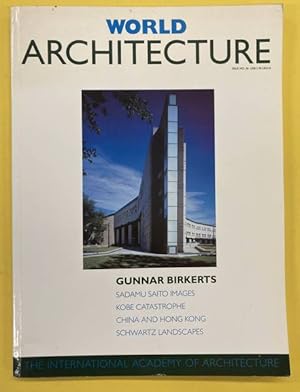

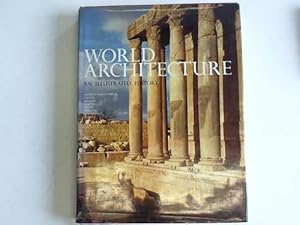


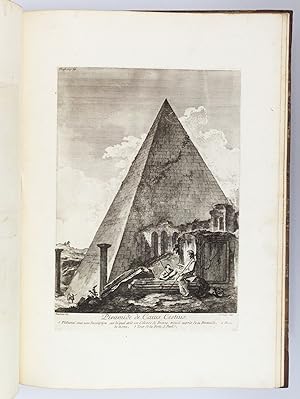
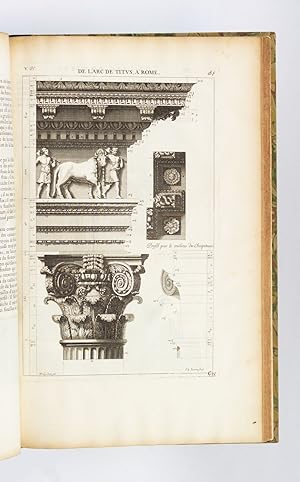
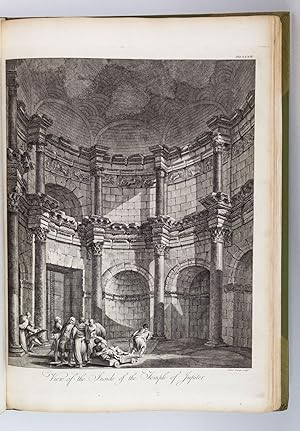
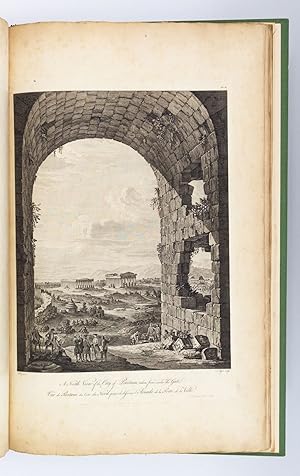

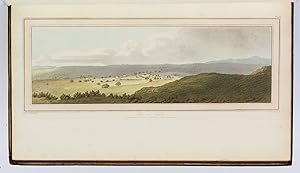
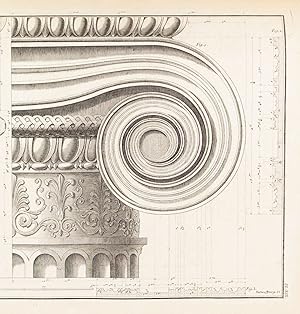
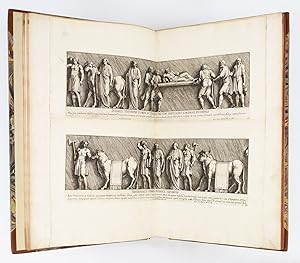
![Bild des Verkäufers für [VUES PITTORESQUES DES RUINES LES PLUS REMARQUABLES DE L'ANCIENNE VILLE DE POMPÉI] zum Verkauf von Phillip J. Pirages Rare Books (ABAA)](https://pictures.abebooks.com/inventory/md/md31336472923.jpg)
